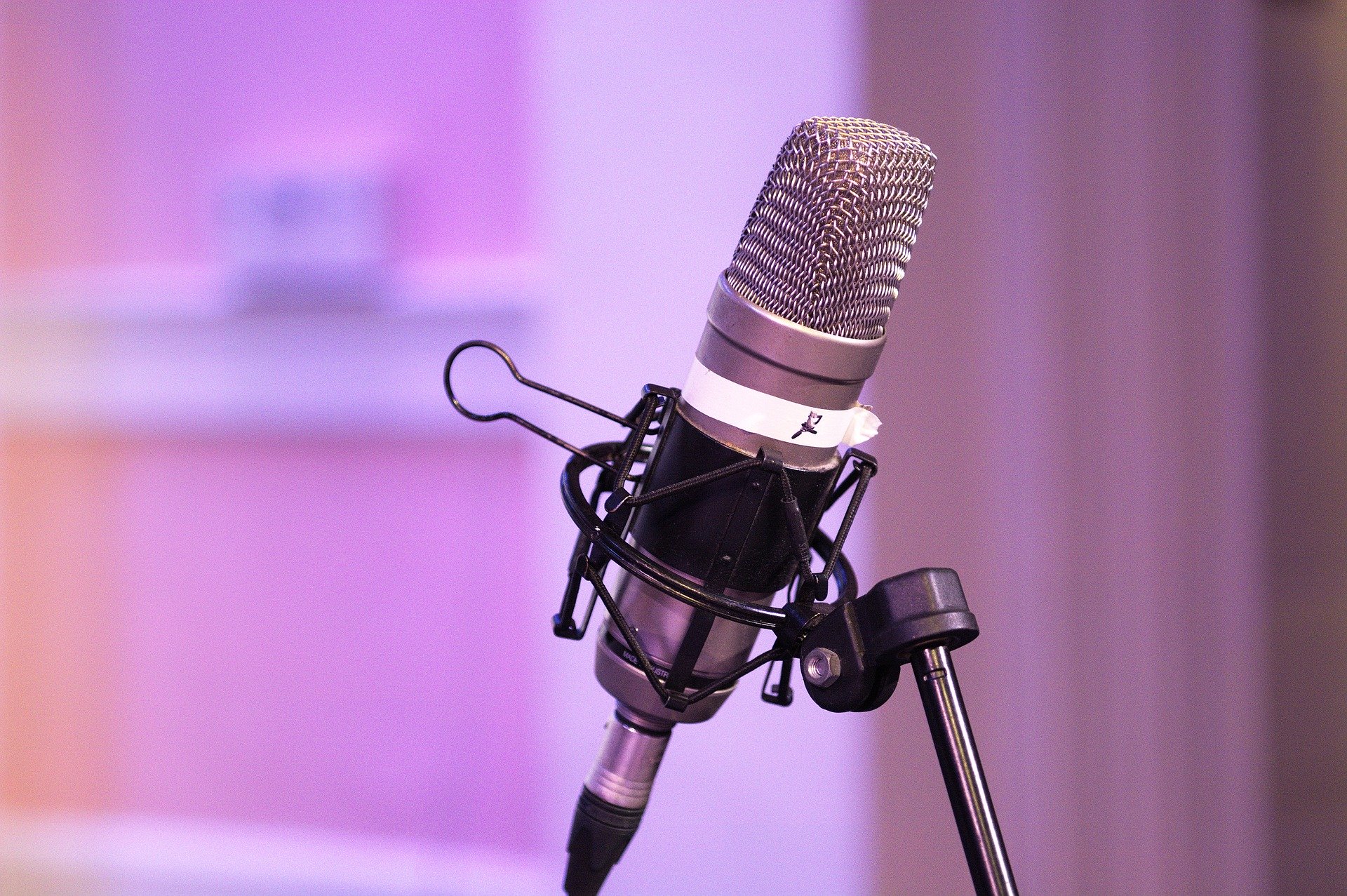How to Start a Podcast (Step-by-Step Guide to Making Your First Show)
With 32% of all Americans regularly listening to podcasts every month and 22% tuning in weekly, the podcasting space is ever-growing and there is currently tons of room for you.
A lot of people prefer listening to something that is not video or text-based while they drive to work and music does not always cut it.
Contrary to what you may think, starting a podcast of your own isn’t that complicated or expensive.
Another great thing about podcast listeners is the way they listen.
Compared to blog readers who quickly scroll through one or two articles at best, podcast listeners are far more loyal.
80% of all listeners listen to all or most of each podcast episode. That means you have plenty of repeats and you do not have to constantly be scared about losing traffic.
Once you build a loyal fan base, podcasting can become a business in its own right.
So, are you looking for a complete guide that can teach you how to start a podcast?
Today we are going to go through the 16 basic steps you are going to need to cover to start a successful podcast.
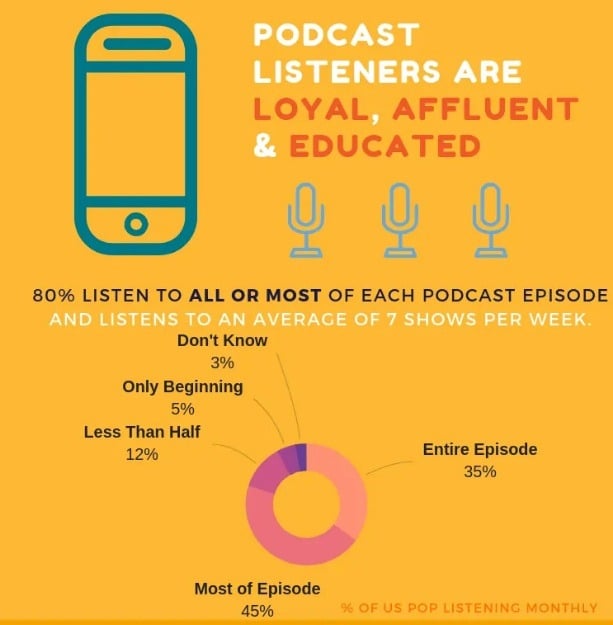
Source: Podcast Insights
Much like starting a blog, a podcast can be a great way to increase brand reach. Companies can get leads and open themselves up to a new customer base through the power of podcasting.
According to Nielsen, 50% of all homes are podcast homes and as mentioned above most listeners come from affluent and educated backgrounds.
This inexpensive and easy way to make cash on the side or grow your already established business (depending on what you want) is catching on quickly.
This 16 step guide to starting a podcast ought to give you everything you could possibly need to get started.
Disclosure: Some of the links below are affiliate links. You can read my full disclosure here.
1. Figuring out your podcast’s target audience
Podcasting could be a passion project but in most cases when you are learning how to create a podcast, you would like to see some dough at the end of all your efforts.
The first step to getting to a point where that is possible is figuring out what sort of customers you want to attract with your podcast.
What interests them? What are they searching for?
If you are an author trying to sell historical fantasy books, starting a podcast on sports is not going to get you far even IF you have listeners.
This is why it is imperative to think before you jump. Very similar to starting a blog, many people tend to pick a random topic and run from there without realizing what an important step they are rushing through.
Understand your podcast’s target audience
For example, The Minimalist Podcast by Milburn and Nicodemus perfectly aligns with their target audience’s interests.

They have a Netflix documentary titled Minimalism and have even written 3 books on the subject of why you should consider the minimalist lifestyle.
They are all in and all about minimalism. No two ways about it.
You need to be giving your audience the right content so you are targeting the right people.
That is your very first step. Understand who your listener is and give them what they are looking for.
It is perfectly fine to take your time figuring out what you want your podcast to be about.
This means taking time to talk to people who already have a podcast and some experience, researching ideas, and creating an episode calendar.
More people than you think would be happy to give you advice and there is no harm in asking.
2. Will your podcast be able to stand the test of time?
This one is important and a lot of people mess it up. They narrow down on a topic that could give their business leads and that they are passionate about but they don’t count how many episodes can be created under this topic’s umbrella.
Is your topic too narrow? Can you make a list of 40 potential episode topics?
These questions need to cross your mind before you move on to the next step.
You need to make sure you are an expert on the topic you decide to create a podcast on. The topic also needs to have the potential to make hundreds of episodes.
You do not need to have 40 scripted episodes ready to go. It is more about the ability to come up with ideas.
If you make 20 episodes and then run out of content, you have got a big problem on your hands.
Making a rough content calendar would be a good first move and you should always have a couple of ideas at the back of your head.
Every podcast’s worst nightmare is running out of content.
Bottom Line: Select a topic you are passionate about, know everything about, and can cover tons of episodes on.
3. How to name your podcast
The title of your podcast is your brand. It is what will draw people in, interest people, piss them off, make them curious, give them a laugh… whatever.
Most importantly, it is a factor that affects whether they listen to your podcast.
Having the right podcast title is pretty important. You will base your podcast artwork on it, be known by that name, and maybe even create music based on it.
Do not let this freak you out though. The podcast hosting service you choose will let you change the podcast title and description at any time so it is not permanent.
Nonetheless, you would want your title and artwork to be in place before you roll out your first episode.
Here are a couple of ways you can go when it comes to your podcast title:
Established Brand
If you already have an established brand, then your naming process is normally pretty simple. So, if you already own a company, website, clothing brand, etc you would normally just take your brand name and maybe added the word ‘podcast’ at the end.
This makes it easy for loyal fans you already have to find you and you also have a connection between your podcast and brand.
Examples:
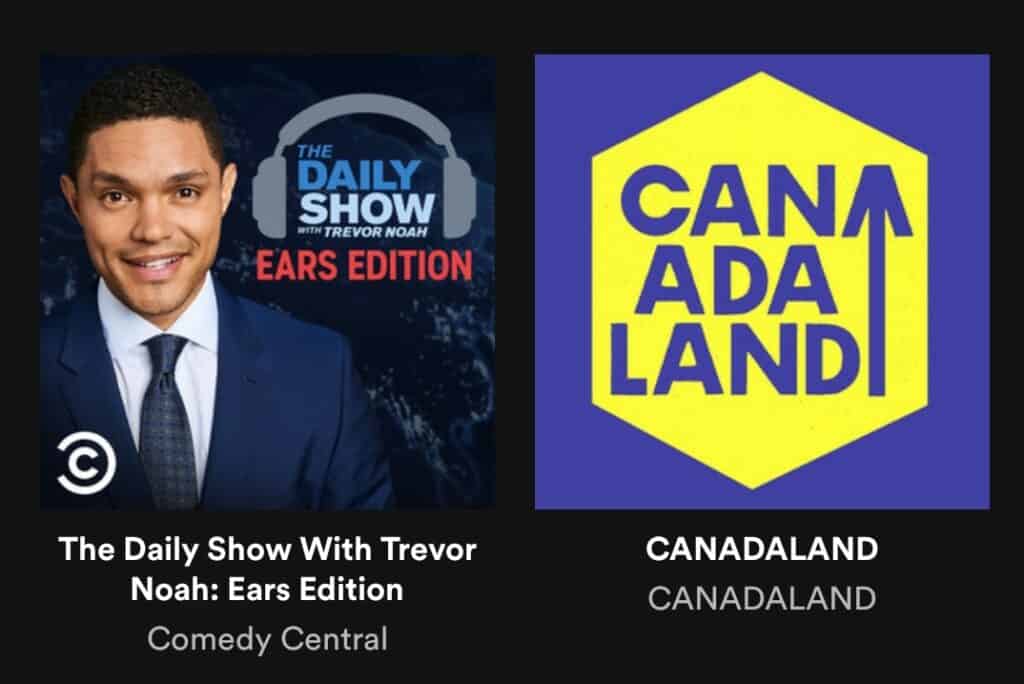
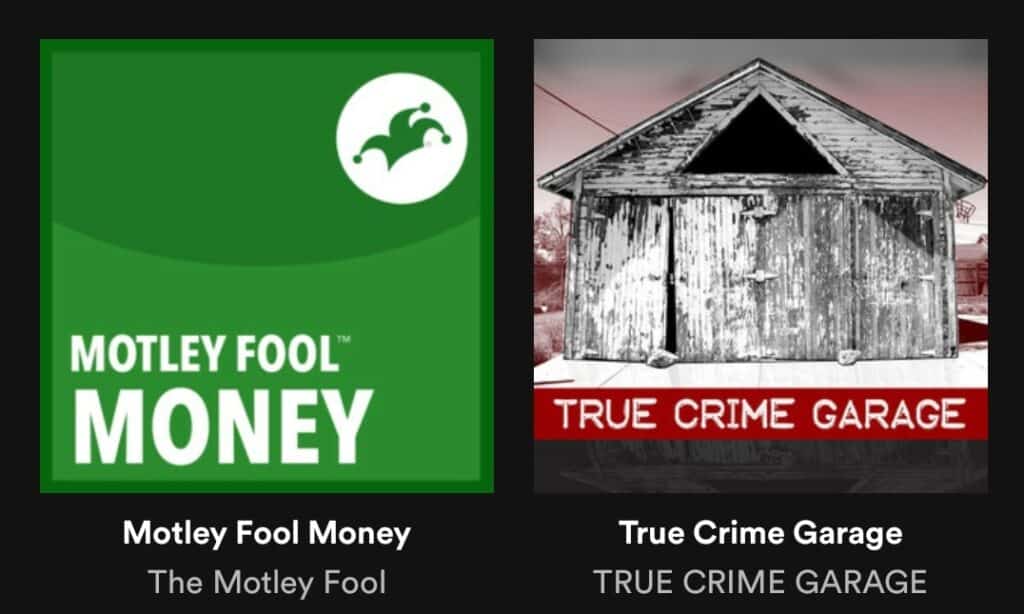
Personal Brands
If you are known by name within your industry and your name carries some weight, naming your podcast with your own name would make sense since you are what is attracting new listeners.
Descriptive
If you are new to the game and do not have a brand to back you up, going for something descriptive rather than something ‘clever’ is probably your best bet.
Remember that you will be found with search engines so if you own a tech podcast and it is called ‘tech stuff’, your audience will find you with more ease.
This does not mean you should stuff your title with keywords because you could end up being banned because of this.
Keep it natural and place your target keyword naturally.
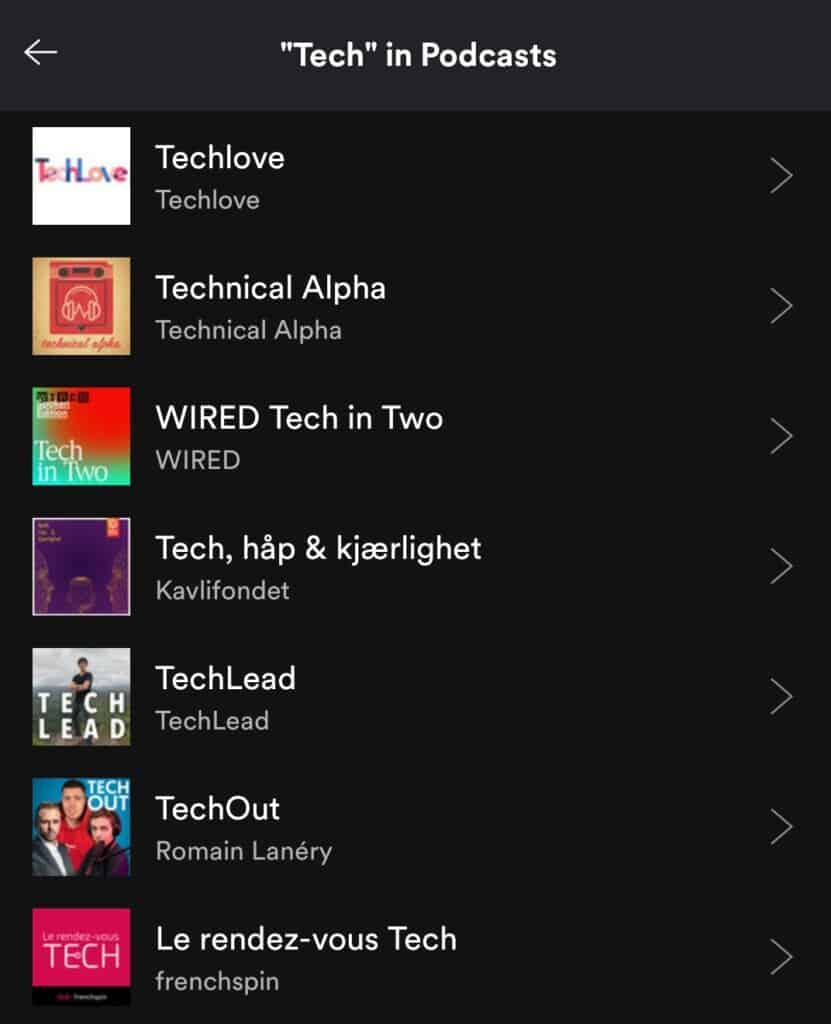
4. Create a catchy podcast description
If your title is good enough to make people want to check you out, your description will decide how far they go.
Just like your title, you can edit your description. It is 4000 characters long and you should be able to explain what you are all about within those 4000 characters.
A couple of pointers:
- Keywords are important but fit them in naturally. Just like a title, keyword stuffing will get you nowhere but on the blocked list. Not to mention, human beings prefer plain language not a random bunch of keywords so you want to write an enticing description.
- Make sure you keep it short and sweet. While you are allowed 4000 characters, most people won’t get that far. Keep it descriptive and try to explain your brand the best you can within that paragraph.
- Mentioning how frequently you post and how long your episodes are would be a good idea since that is valuable information for a potential listener.
- Don’t be shy about talking about your achievements. Make people understand why you are the expert they should trust.
Bottom Line- Give the people what they want: explain what your brand is all about, get into the details about your podcast frequency, and don’t make it too long.
Here is a good example:

5. How long should a podcast episode be?
If you have heard enough podcasts, you have heard everything from a 2-minute podcast to one that prattles on for hours on end.
That’s great but what works? What is the ideal length?
You need to figure out at what point a listener has had enough.
This depends on the frequency at which you release new podcast episodes and how loyal your fan base is.
If you are releasing a weekly podcast, one hour would be alright but if you have a daily podcast without a loyal group of listeners, what’s the point?
Someone like Ben Shapiro, for example, has a following so large he can afford to release one to three-hour podcast episodes every day and get tons of listeners every single time.
For the average Joe, the streaming should not be spread apart past a week nor should you be going overboard posting every day.
Weekly posting is normally what works best. While that is the general rule, take into account the type of content you are creating.
Will you be able to create great quality every week? Is it hard to create a good podcast in your niche?
Quality over quantity. If you can only create one great podcast every two weeks or one mediocre one every week, go for the first option.
Here are a couple of helpful stats:
The average attention span of a podcast listener is 22 minutes. Stitcher, a podcast site with some great tips, says that the average listener will stay attentive for 22 minutes before losing interest. This is why a lot of YouTube videos are created with the same length in mind.
While this is the average attention span, the average podcast length is actually quite different at 43 minutes.
This means it really is up to YOUR listeners and keeping them interested. What length works for your listeners will depend on the type of content you produce and the quality.
There is an average attention span and there is even an average podcast length but podcasts of all lengths are successful.
Take the Joe Budden podcast, for example. It has an average length of 3 hours and is still extremely successful!
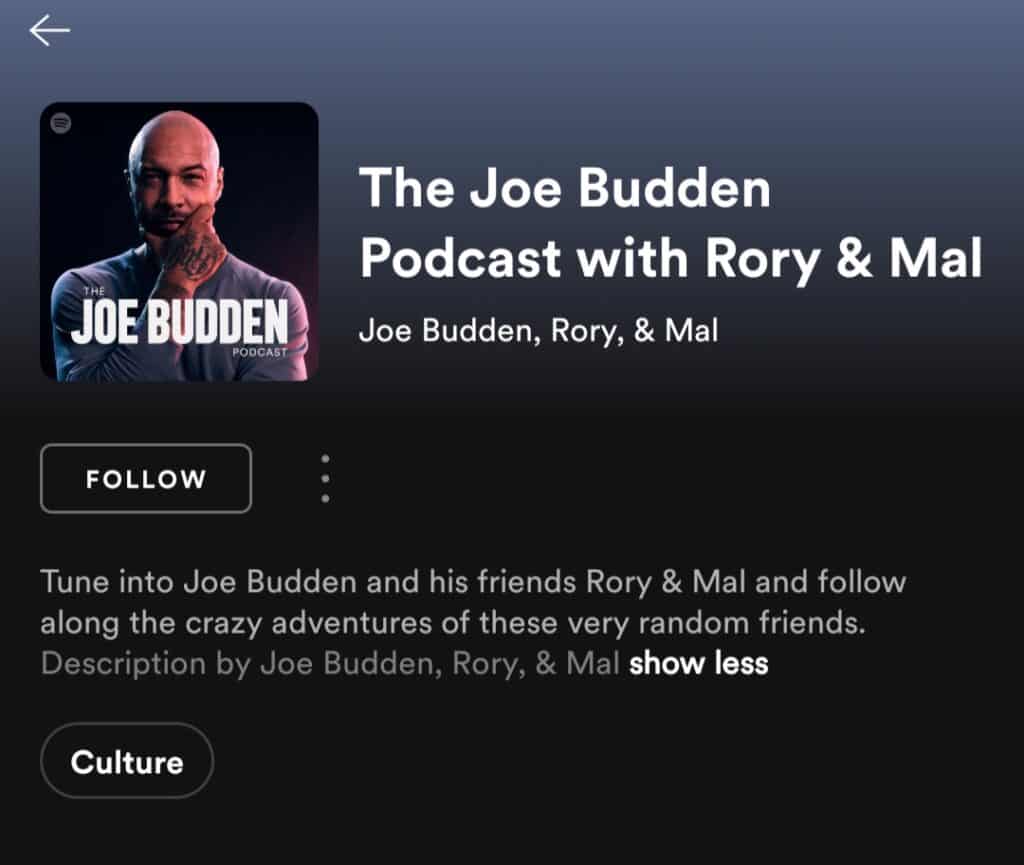
Do not shorten good content or lengthen average work. Make your length directly related to your content.
While the averages may be in figures, your length should depend on your audience and what they want.
If you want to make an episode that is three hours long and you are on the fence about it, you can even consider posting it in two parts. The possibilities are endless.
As time goes by and you develop a group of loyal listeners, they will be writing to you to tell you if it’s too long or short.
You can then also consider using your podcast episodes to create YouTube videos. This could be a good way of growing your reach across different platforms and adopting an omnichannel approach.
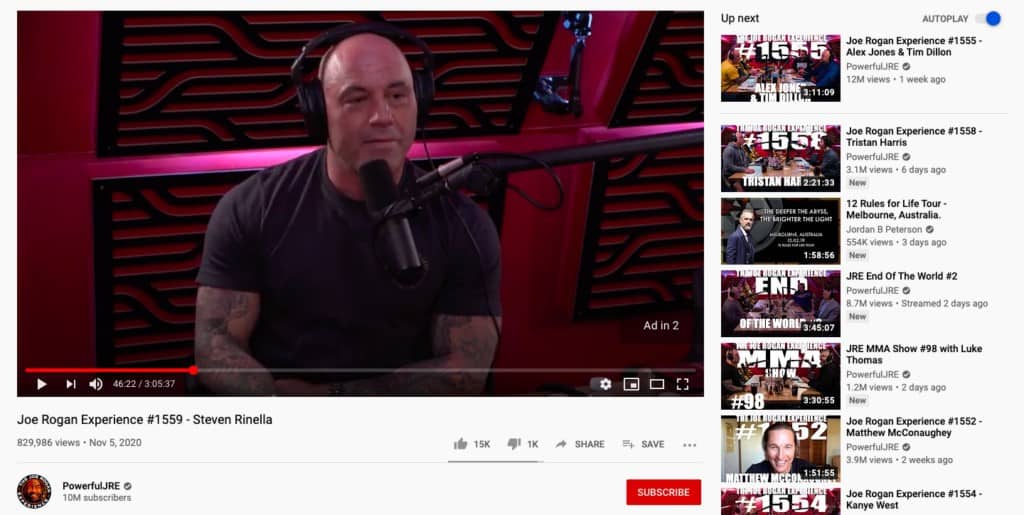
Joe Rogan does this frequently on his YouTube channel and it helps him increase his viewer/ listener base every single time. To get yourself started, you can take a look at this article that walks you through exactly how to create a great YouTube intro. It is how you are going to get people to click on those videos.
6. How often should I release new podcast content?
The best schedule is one where you can create content that does not compromise on quality while still being passionate about your work.
If you can only manage to add a new episode every month, that is fine but a weekly frequency is ideal according to Buffer.
This number was landed on mainly because 40% of the top 25 podcasts have a weekly posting schedule. Anything less than that is fine too but people tend to remember to tune in every week more than they would if you posted sporadically or every month, for example.
Out of the top 25, only 3 podcasts did not have a set schedule. This narrows down to the point that having a schedule of some kind is imperative because it gives your listeners a particular time to tune in and a time they can remember.
Your frequency should also take into account the length of your podcast. So, if your podcast length is only a few minutes, posting daily is not a bad idea.
Bottom Line: Post as often as you can while focusing on the quality of content and length of your podcast.
Make sure you keep the passion for your project alive as well.
7. Narrow down on a podcast format
Your podcast format is the outline of your entire podcasting brand. Do you want to go solo or get into interviews?
Being consistent with the format of your podcasts can do a world of good since most of your listeners are looking for some amount of consistency when they tune in every week.
If you stick to a solo format or an interview format it gives listeners the ability to know what to expect.
Here are some common formats:
Interview Podcasts
Interviews are a great way to add another opinion to the table and widen your audience. If you are getting a well-known person on to your podcast to be interviewed, you are potentially opening yourself up to their audience.
On the other hand, interviewing has a few downsides like finding great people to interview. You need to develop connections, network, send emails, and work around other people’s schedules.
Solo Podcasts
If you love talking and have a lot to say, solo podcasts are not a terrible idea. They work great for people who can really command attention and keep people entertained.
You can also build authority with your opinion only and monetization becomes easier. If you add someone to the podcast, you may have to split earnings in some cases.
Couple of solo examples:

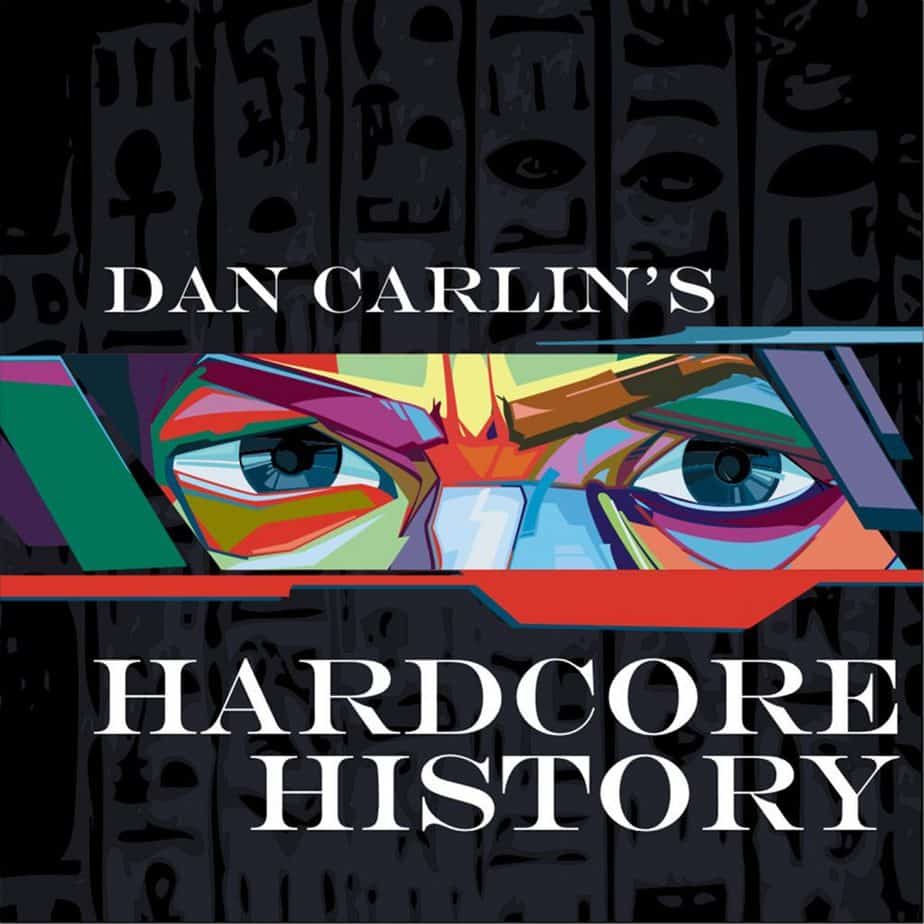
Storytelling
This one is pretty simple and it works great for writers. You are kind of publishing your own audiobook. Storytelling podcasts can be either fictional or non-fictional- it is totally up to you.
Here are a couple of examples.
Others
- Educational
- Podcasts that tell true stories
- The panel format(discussion)
- Hybrid (Mix it up)
8. Get your artwork ready
Your podcast artwork is one of the few first impressions you will get to give potential listeners.
Your artwork needs to be able to convey your message, stand out and fit certain standards laid down by most streaming services.
Great cover art will interest a person scrolling through loads of search options and it is also the logo or picture you will be remembered by.
You can hire a graphic designer if you have the money to throw, but tons of newbies simply buy stock images and use software like Canva or PiktoChart to create their own cover art.
Now, here are a couple of tips you need to follow:
- Get the sizes right: Your cover art needs to follow certain specifications laid down by directories like Spotify and Apple Podcasts. For example, Apple requires artwork to be a minimum of 1400px x 1400px and maximum 3000px x 3000px.
- Let your artwork do the talking first: Your podcast artwork should convey what is INSIDE your podcast. If you are the brand and personality, a picture would be great. If you have a brand outside of the podcast, use a recognizable logo. Create artwork that reflects what a listener will find once they press play.
- Easy to read font: Use fonts that are easy to read. Stay away from the fancy, swirly stuff that people need to pause to read. Remember that your readers are scrolling through options fast. No one wants complicated. Take the logo of this website, for example, it is a plain ol’ blue with an easy-to-read font.
- Keep it short: If your podcast displays as a thumbnail, which it often will since most people use their phones, too many words are not going to look good. Just mention the name of your podcast within the artwork at best.
9. Create music for your podcast intro
There is no rule that says you have to use music within your podcast but a lot of podcasts do choose to add a couple of introductory notes that people can relate their podcast with.
Your music will become part of your podcast’s brand and you will be associated with that particular jingle.
Just like a TV show has a couple of seconds dedicated to a musical intro, your podcast having about 10 seconds to do that is not a bad idea.
You can use music during the intro or outro of your podcast or even during intermissions to keep people interested.
What music can I use for my podcast?
You can choose to buy music or just use music from free resources. A paid option would be SoundStripethat gives you unlimited access and options to tons of music every month for a set monthly fee.
Best Places to Get Free Music for Your Podcast
If you want, you could even have your own music made- it really is up to you.
A service like Music Radio Creative can help you with that. They will create music for your intro or outro for a fee.
At the end of the day, the music suits certain podcasts that have a light note to them such as a humor-based podcast but if you have a more serious vibe to your podcast, skipping music is not a crime.
It really depends on what sort of brand YOU want to create and what niche you are in.
10. Scripting for podcasts
A podcast script is the skeleton of your episode and you can stray away from it but you do need to have a base to refer to.
Some people prefer to have the whole thing written down right to the last word while others just start recording and take it from there. It depends on you.
You can choose to have an entire script written down and read it word for word or have a few bullet points to refer to. Choose what works for you.
You want to be able to get your point across in the best way possible and to do this you need to plan in advance. You may know exactly what you want to say but organizing your thoughts and writing stuff down is priceless.
Your script will include stuff like sponsorship messages, the intro, talking points, news pieces you want to refer to, a conclusion, etc.
Here is an example of a good podcast script for a co-hosted podcast:

Here are a couple of tips to keep in mind when creating a podcast script:
1. Paint a picture for your readers: Make sure you be descriptive within your script. Do not write it down like an essay. Paint a picture with your words so that you reel listeners in.
2. Do not follow your script to the letter: Allow yourself to use the script as what it is- a skeleton. You can refer to it but you do not have to simply read it out. Use it as a base and then go from there. You can choose to add certain talking points in the moment or not mention something you wrote down.
3. Cut out the fluff: People have low attention spans and get bored easily. Make sure you cut out the fluff and keep it concise.
4. Speak like yourself: Write it how you would normally speak and do not try to sound like someone you are not! People are listening to you because they want to hear what YOU have to say. Keep your personality intact within the script.
11. How to speak into a microphone
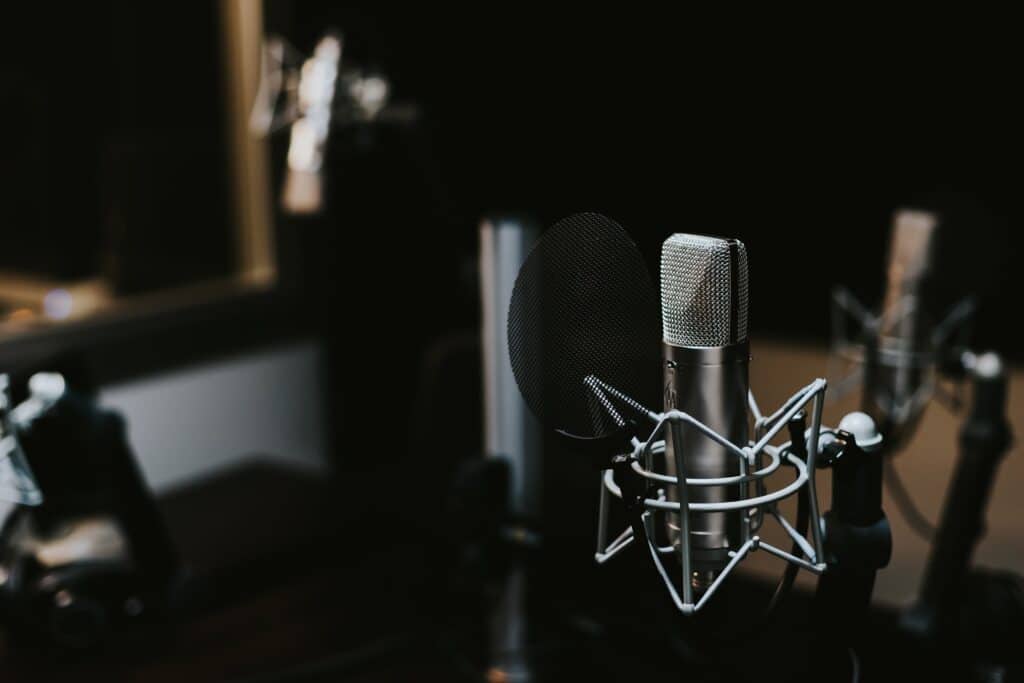
The microphone may seem alien to you but if you keep a few things in mind and keep practicing, it won’t be long before you can jump on and record an episode without thinking twice.
The biggest reason why beginner podcasters fail at this is because they forget that they are having a conversation with their listeners and not the mic or themselves.
You need to focus on the fact that someone is listening to what you are saying. You aren’t talking to an empty room.
Now that you know who your target audience is, use that.
Pretend you are speaking to one of your listeners directly. This will make sure you sound more conversational and normal rather than stiff and robotic.
Here are a couple of tips to keep in mind when using a microphone:
- Understand and get to know the mic you are using. We will be covering various types of mics and equipment that you can use in the 13th step but in short, you need to understand that each mic is different. It will pick up sound differently, have its’ own style, be of a certain type, etc.
- Pace yourself when speaking. Do not go too fast. Make sure your listeners can catch every word. Use voice modulation to emphasize important parts or just to catch your breath.
- Do not just read stuff off a piece of paper. Make sure you sound like you want to be there so that your audience is happy to be there too. Make sure you are letting your audience feel the emotions you are trying to convey with each sentence.
- Get close to the mic so that it picks up the right sound.
- Do not get too close. This can pick up the wrong noises like breathing.
- Do not breathe too heavily. Stay relaxed. Noisy breathing or shuffling in the background is going to be distracting and unprofessional.
12. Purchase the best podcast recording software
You may have the best content ever but if your audio quality is shit, most people will get so frustrated, they are going to pause and leave real quick.
While you can record a podcast on your laptop, the sound quality is gonna be below average at best and when it comes to this sort of media consumption, listeners are going to pick the best sound quality out there.
Podcasting equipment and recording software allow you to improve the quality of your sound in a couple of ways. It eliminates any background noise, allows you to edit the track, and makes the sound clearer.
So, let’s get into it.
The best recording software for podcasts:
When it comes to recording software, picking the right one is important because it dictates the type of episodes you will be able to produce.
Will you be able to edit and record episodes the way you want?
Here are some of your options:
#1 Garageband or Audacity (Free)
Garageband and Audacity are the best beginner-friendly recording software options you can use from the comfort of your own laptop. These are for people who are just getting started and it can help you record, edit, slice, and change the speed of episodes.
These options are available for free and they great for people on a shoestring budget.
> Download Garagebank here (Available on MAC)
> Download Audacity here
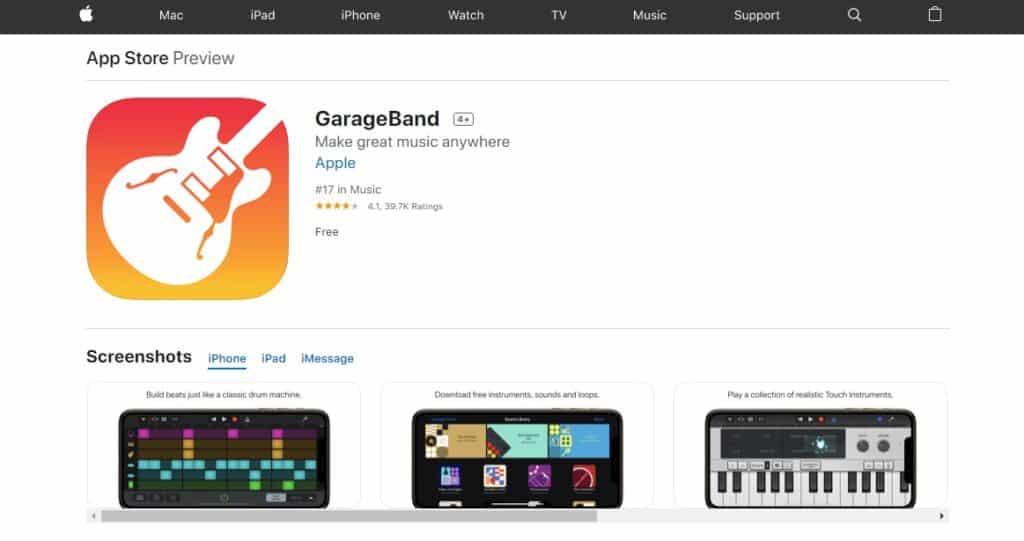
#2 Adobe Audition
Adobe Audition is option #2 only because it is a paid version. In regard to features, it is superior to most other recording software. It is the photoshop of the podcasting world and it’s got everything you could possibly think of.
You may take more time getting to know the ropes but if pro is what you are looking for, this is it.Buy Adobe Audition On Amazon
#3 Alitu
Finally- Alitu.
Alitu is100% automated and there is virtually no learning curve but it still has the perk of having great features and a seamless workflow.
It automates pretty much everything from editing your music to publishing episodes to your host.
If you want some digital help or you just don’t want to spend ages editing and posting, this one is a great option.

Interviewing remote guests or working with remote hosts
When you are learning how to make a podcast you will come to the point when you want to interview a remote guest or bring on a host that is not physically close enough to be there.
In this case, for recording audio interviews, you can use Skype or Zoom.us which is a video conferencing software.
Skype is free to use and you can just press the ‘record call’ button to get started. This is available for any call from any account.
Zoom.us is free to use for up to 2 people or free for 40-minute conversations with a group.
13. Purchase the best podcasting equipment
Podcast equipment can range from a few bucks to thousands of dollars for an at-home studio.
The key is understanding what the right balance is and in most cases you will or at least should be spending a whole lot less on equipment than you think is needed.
So, how much does it cost to start a podcast?
Now that you have the software sorted, you need to figure out what equipment you want to use.
Some of the best podcast hosting equipment options are:
For podcast hosting equipment, you are going to AT A MINIMUM need a USB microphone, a laptop, a mixer, and headphones.
>Best Laptop for podcasting: A Macbook Pro will serve you well when you are editing podcast audio. It has up to 10 hours of battery life and is pretty light which makes on-the-go work a breeze. You can get it on Amazon for $1,149.
>Best Headphones: I recommend the Sennheiser HD280PRO Headphones which are a comfortable fit and have great noise cancellation tech to help you stay laser-focused.
>Best Dynamic USB microphone: For Dynamic mics, I recommend the HEiL sound PR-40 Dynamic Studio Microphone.
Dynamic mics are good for at-home usage and recording vocals. It works especially well when you are recording multiple people at the same time. In comparison, you will find most condenser mics being used in studios since they are more sensitive to sound.
>Best Condenser Microphone: Condenser mics are known for their amazing sound quality and are normally a bit more expensive. They are used in studios in particular because they are more sensitive to sound and a studio is an environment within which external sound can be controlled.
These mics also work well for solo podcasts since they are very sensitive to sound compared to dynamic mics.
I recommend the Blue Yeti USB Microphone.
If you are still confused about dynamic vs condenser microphones, check this video out:
14. Publishing your podcast: Use a good podcast hosting site
Okay now that you have got the software and recording equipment you are going to use to create a podcast, you are going to need a podcast host. This is the answer to the ‘where to start a podcast‘ step of the process.
So, how do you upload a podcast?
A lot of people listen to podcasts before they start one of their own which is why when they finally do they think they can upload each episode to Apple Podcasts (previously known as iTunes Podcasts), Spotify, or whatever else all by themselves.
Can you upload podcasts to Apple Podcasts or Spotify directly?
No, Apple does not actually host your podcasts or any other podcast for that matter. You will need to get a podcast host to do the work for you.
A media host (your podcast host) is very similar to a web host with the only difference being it will deliver bigger files like audio or video files.
Most people will recommend BuzzSprout and so do I. It is affordable, dependable, and has an easy-to-use interface.
It is one of the options that offer all of the features you are going to need to get started at a good price. (starts at $12 a month with options to upgrade)
Also, if you use my BuzzSprout link here you will get a $20 Amazon gift card as a welcome bonus.
Submitting your podcast to directories like Apple Podcasts or Spotify so that it gets listed…
Now that you have got yourself started with a good host, you are going to submit your podcast to directories like Apple Podcasts or Spotify.
All of the well-known hosts (BuzzSprout, Transistor, etc.) will give you auto-submit options where they submit your episodes for you or very detailed instructions on how to do it yourself.
Finally, a (free) place to deliver your episodes:
Once you select a podcast host to host your audio files, you are going to need to find a place to deliver them. You are going to need a website for this. This website will not HOST( that is what BuzzSprout does) your podcast, it will simply deliver it.
This can be either be via your own website or through a website provided by your podcast host. All of the well-known hosts like BuzzSprout, Transistor, etc. will offer a free website with their services.
You can use this if you want to keep things simple. Alternatively, if you want more features and the ability to brand your website and make things more pleasing for the listener, you can host your podcast on your website.
Setting up a website with a host like Bluehost is pretty simple and you can use my how to start a blog guide to get started.
If you already have a website, just use that.
Now some people go into this thinking they can upload their podcasts to their website directly or to Apple Podcasts directly. We have already crossed off direct uploading to Apple Podcasts and regarding uploading to your website, that isn’t a great idea for a couple of reasons:
- Podcast episodes are huge files and it will take up a lot of space on your website. Even though some hosts claim to offer up unlimited storage and bandwidth, they are not going to be too happy if thousands of people are downloading your podcast every day because this is going to be using a lot of bandwidth. This could lead to them not wanting to host you anymore.
- If your host does not offer unlimited bandwidth, your host could charge you heavily for using so much bandwidth.
- Even if your host is fine with it and everything is great, you will have really slow download speeds no matter what website host you have which will indirectly cost you subscribers. Your website is not going to be able to deal with such heavy usage and downloads and slow speed will be the cost you pay. Podcast hosts are in demand because they excel in podcast hosting and are able to give you the speed you need.
Once you decide to host your podcast with the help of a podcast host, you are going to need to get yourself a good one.
A podcast host will be the base for your podcasts. You can add cover art, edit the description, add new episodes…, whatever you need.
Here is the link to BuzzSprout one last time. You will get a $20 Amazon gift card using this link of mine.
15. Steps For Attracting New Podcast Listeners
Now that you have got your podcast up and alive, you are going to want to promote it so that you can grow your audience and start making profits.
Here are some of the best ways to promote your podcast and grow your reach:
1. Tease your podcast’s launch date with an already engaged audience
If you already have a brand of your own or you are a well-known name in your niche, use that!
If you have a huge group of followers on social media or an engaged email list, tell them about your podcast before you launch it. Anything new that you are launching should always be teased a little instead of simply sprung on your audience.
A build-up to the launch date has a better chance of getting people interested.
This way when you finally launch your podcast there will be a group of people who are already looking forward to it and would be happy to check it out when you tell them about it.
2. Join a community of podcasts
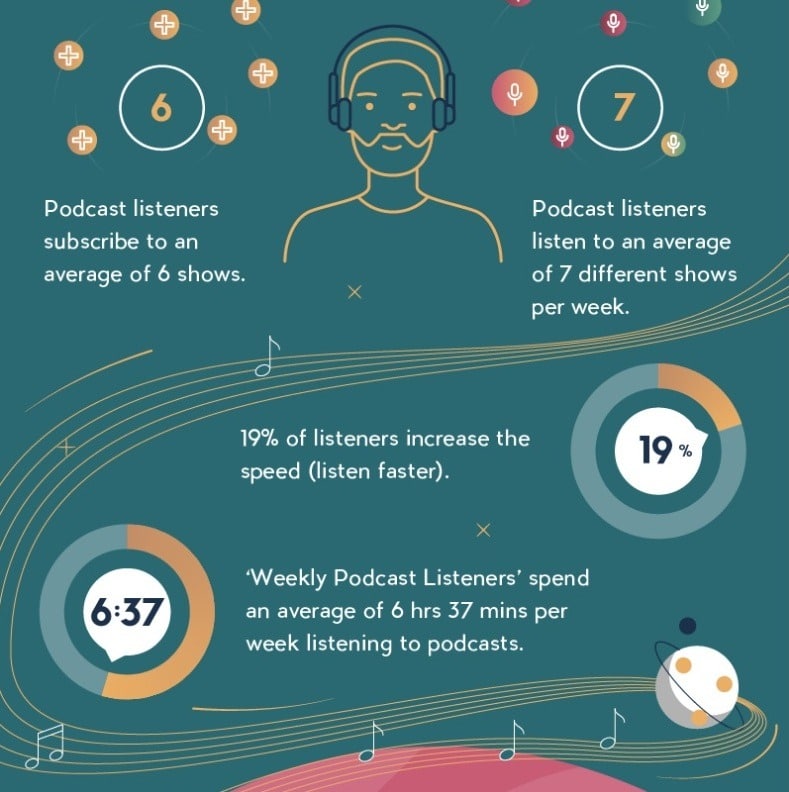
Image via MusicOomph
Podcasts are not like TV Shows. Your fellow podcasters are not your competition but the community you should depend on.
Most people who listen to podcasts, listen to an average of 7 different shows per week and subscribe to an average of 6 shows.
Once you launch your podcast, create a short promo and send it to some of the podcasters in your niche. A lot of creators would be happy to promote a good podcast that they come across. When you do reach out to podcasters, tell them you would be happy to promote them right back.
Fostering relationships in the podcast world is priceless.
You could also bring fellow podcasters as guests for an episode on your show. If they have been featured on an episode of your podcast, they are extremely likely to promote that episode and maybe even bring you on as a guest on theirs.
3. Use Incentives
If you have the extra money for it; giveaways and free gifts for regular listeners are a great way to grow your subscriber list. You could create a giveaway for new subscribers or have a contest for avid listeners.
4. Keep in touch with subscribers via email
Maintaining and growing relationships with your subscribers is as important as getting new ones. You can create an email list and perform email marketing to engage with these subscribers of yours.
Email marketing converts at an extremely high rate compared to other forms of customer acquisition with 81% of small businesses relying on email as their primary customer acquisition channel. It also has an ROI of $42 for every $1 invested!
If you want to get started with email marketing, use email software like ConvertKit or Get Response.
5. Focus on SEO
You want to hit the first page of Google and every directory that has your podcast listed within it.
This will include having some stellar content as well as using the right target keywords.
Make sure you include your target keywords in the title and description of your podcast as well as each episode.
16. Ways to Monetize Your Podcast
Whether you are learning how to launch a podcast with the aim to make money or you just started a podcast as a hobby, you should know your options.
This is why we are going to explore the different ways you can make money with a podcast.
Here are some of the most common:
1. Sponsorships
Sponsorships are tie-ups with companies that want you to mention their product within a relevant episode of yours for a specified amount. They may give you a script pr ask you to mention it organically mid-episode; it depends on the client. Once you grow your podcast to a reasonable amount of weekly listeners, you could consider reaching out to brands and asking if they are interested.
If you decide to go that route, it would be a good idea to have set rates for different services (rate for posting on social media, the rate for mentioning it within an episode, etc.). You should also have a media kit ready that includes everything there is to know about your podcast.
- How did you get started?
- How many weekly/monthly listeners do you have?
- What is the percentage of female/male listeners? What is the percentage of listeners with kids? (You can send your subscribers a survey to figure this one out and get some data to add to your media kit)
- Who created the show?
- Who is the host?
- Why do people listen to your podcast?
- How is your podcast unique?
You could add your cover art, your logo, your rates, a trailer, etc.
Here is a great good guide to help you create a media kit.
While this is a nice idea, you should know that most of your sponsorship deals will come from brands reaching out to YOU. The practice of reaching out to brands is a good one but growing your podcast to a level where brands are reaching out to you is the final aim.
2. Affiliate Marketing
Affiliate marketing is a great monetization method for beginners. You recommend products you are an affiliate for within your podcast and then direct users to your specific affiliate link so they can make the purchase.
You get a fixed percentage of the sale whenever a user buys a product through your link.
Learn more about affiliate marketing here.
3. Donations From Regular Listeners
This is the simplest way to make some cash from your podcast. Regular listeners are more than happy to donate money to their favorite podcasts to make sure they can afford to keep creating content they love.
You can add a PayPal button or a link to your Stripe account for people to donate.
Stay honest and tell your readers how the money will help you keep producing content. People are happier donating to people they trust.
4. Sell your own products
If you create a brand for yourself, your fans are going to be more than happy to buy some of your merchandise. You could sell tops, mugs, laptop covers, etc. (anything with your podcast logo or catchphrase).
You are selling the brand you have built.
A great example of this is Joe Rogan’s online store that people are referred to via his podcast episodes. He is known as one of the best in the podcast world with interviews with guys like Elon Musk.
Who would not want some merch from a podcast they love?
It is not hard to create an online of your own with a service like BigCommerce that streamlines the process and helps you get started for a monthly fee. They give you the foundation to start your store, add payment gateways, etc.
You can send listeners to your e-commerce page by mentioning it within your podcast episodes.
5. Sell premium episodes
You could sell certain episodes as part of a premium model where interested listeners pay a monthly membership cost to be able to access certain premium content that is only available to exclusive members.
Creating a podcast is not as complicated as you may think if you have a step-by-step guide to help you through the process.
Hopefully, this guide covered every question you had about how to start a podcast business.
No matter what niche you are interested in, there are listeners out there who are waiting for someone to create the best content they can find. Make sure you do not just copy what everyone else is doing.
Add a twist of your own and give your audience something they can only find by listening to you.
Stay patient, keep churning out great content and grow your podcast.
Once you are done following this guide on how to start your own podcast, make sure you got your equipment, the best software, and a trustworthy podcast host.
You can get your podcast launched today with BuzzSprout.
